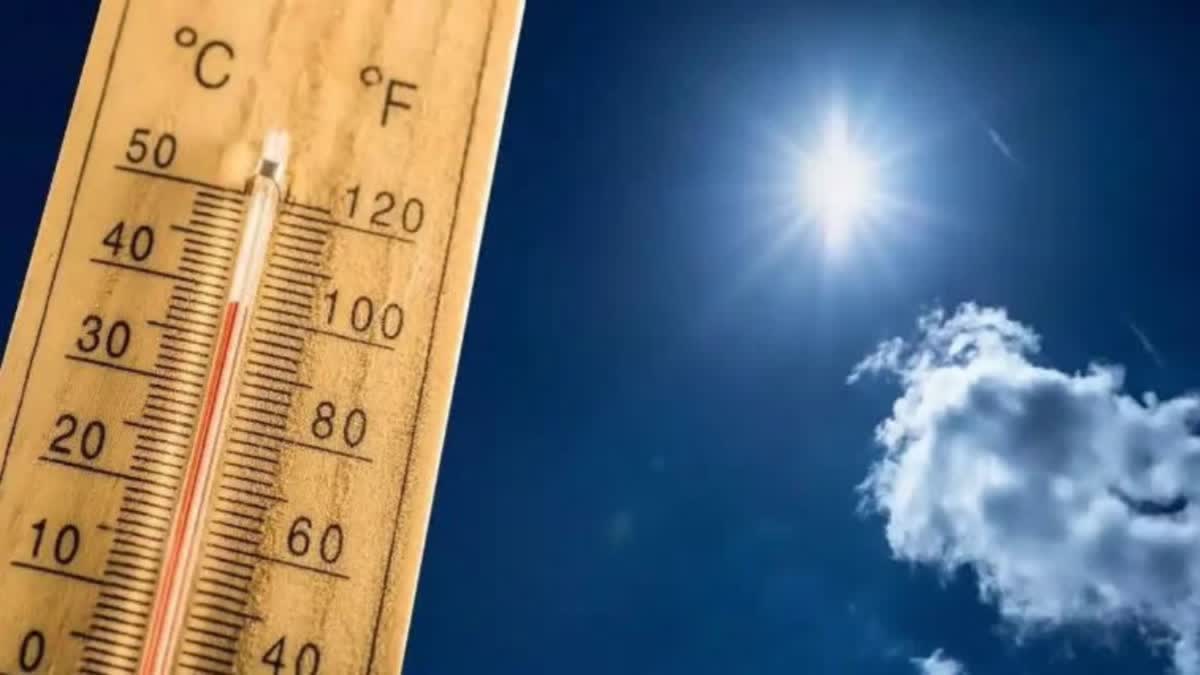New Delhi : Hot surfaced winds seared the national capital on Tuesday as the city recorded a maximum temperature of 44 degrees Celsius, over five notches above the normal.
Delhi also recorded its highest minimum temperature of this summer season at 33.8 degrees Celsius in the early hours of Tuesday, which implies that Monday night was the warmest of the season. According to the weather office, warm to severely warm night conditions are likely to continue at a few places in the city.
Even as the maximum temperature dropped on Tuesday from Monday's 45.2 degrees Celsius, the searing hot winds added to people's discomfort. Delhi Environment Minister Gopal Rai said, "The way temperatures have been breaking records in Delhi and across the country over the past one to one and half months... the primary solution we have is to increase the green cover. We are continuously working towards increasing the green area in Delhi."
In 2013, the green area in Delhi was 20 per cent of the total area of the national capital. It rose to 23.6 per cent in 2021, he said. Delhi is on a red alert which, according to IMD's colour codes, demands urgent action. The city experienced heat wave to severe heat wave conditions in most places.
In Delhi's other weather stations such as Najafgarh, Pitampura, and Pusa the maximum temperatures crossed the 46 degrees Celsius mark. The relative humidity oscillated between 61 and 29 per cent during the day.
Meanwhile, large parts of northern and eastern India remained in the grip of a sweltering heat wave on Tuesday, driving power demands to record highs with warmer-than-usual nights further exacerbating people's distress.
The India Meteorological Department (IMD) said heat wave to severe heat wave conditions prevailed in parts of Uttar Pradesh, south Uttarakhand, Himachal Pradesh, Haryana, Chandigarh, Delhi, Punjab and pockets of north Madhya Pradesh, Odisha, Jharkhand, Bihar and the Jammu division.
Maximum temperatures ranged from 44 to 46 degrees Celsius in many parts of Punjab, Haryana, Chandigarh, Delhi, Uttar Pradesh, and some parts of north Madhya Pradesh, south Bihar and north Rajasthan. The blistering heat has left a large number of people scrambling for water, with storage levels in reservoirs and rivers hitting record lows. The shortage of water for irrigation is impacting agriculture in some areas.
The power grids are under immense pressure and there has been an increase in incidents of short circuits and fires. Delhi, which is facing a severe water crisis, recorded a maximum temperature of 44 degrees Celsius over five notches above the normal. The minimum temperature in the city was 33.8 degrees Celsius, at least six notches above what is normal for this time of the year.
The national capital's peak power demand on Tuesday afternoon reached 8,647 MW, the highest ever for the city. According to officials, cooling load due to the increased use of air conditioners and other cooling appliances amid the relentless heat wave has led to the record rise in power demand.
Hospitals in Delhi-NCR have been seeing an influx of patients with complaints of heat stroke and heat exhaustion as the mercury continued to soar, with doctors advising the elderly and immuno-compromised patients to avoid stepping outdoors. IMD officials said high minimum temperatures or warm nights are exacerbating the impact of the deadly heat.
High night temperatures are considered dangerous because the body does not get a chance to cool down. Increasing nighttime temperature is more common in cities because of the urban heat island effect, in which metro areas are significantly hotter than their surroundings.
At least 10 places in Uttar Pradesh, Delhi, Punjab and Haryana reached or surpassed 45 degrees Celsius on Tuesday, with Orai in Uttar Pradesh being the warmest place in the country at 46.4 degrees Celsius.



